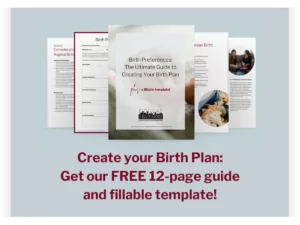The question parents everywhere have to answer: why is my baby crying? Babies cry to communicate. It’s one way they tell you they need food, warmth, or attention. Because we know a baby’s cries mean that it needs something, it can also cause us stress, concern, and frustration. Ultimately, too much crying makes us and our babies tired and frustrated. Let’s explore some common reasons why baby might be crying and some soothing tools you can try!
Why is My Baby Crying?
When babies cry, they are trying to tell us something. Figuring out what the exact reason is can prove overwhelming. Typically, the reason for baby’s distress can fall into a few common buckets.
Normal Physical Discomfort
Babies are new here! Many sensations that we would consider mild discomfort they consider extreme pain. This includes sensations like hunger, gas, and moisture. When baby appears to be in phyiscal discomfort, run through this list:
- When did baby last eat? Could they be hungry?
- When was their last diaper change? Could it need to be changed?
- How is the temperature where we are? Could they be too hot/cold?
- Is their belly tight or are they going “stiff as a board” when they cry? Could it be gas or bloating?
Tiredness or Exhaustion
Brand new babies typically spend long stretches of time asleep between wakeful periods. Being tired is a very common reason for baby’s fussing. This may not even mean phyiscal exhaustion. Remember, most stimuli is new to baby. Their brains can get tired from processing new faces, new smells, and new experiences. When they get overwhelmed, they often cry. Keep this in mind when attending family gatherings or big outings and plan naps accordingly!
Symptoms of Illness or Other Problem
Crying can be one of the first symptoms baby is beginning to get sick. Prolonged crying with no discernable reason could also be an indicator that something is wrong with baby. We recommend that you trust you intuition. If something feels off, that’s enough of a reason to call your baby’s care team. Even if it’s just a call to a nurse line or your doula, no concern is too small if it feels important to you.
The 5 S’s
Dr. Harvey Karp writes that babies are, in a sense, really born 3 months early. The newborn nervous system is not fully developed and unequipped to manage the external stimulus of the world outside the womb. It helps to think of doing what you can to recreate a womb-like environment during baby’s “4th trimester.”
The 5 S’s are for once baby’s biological needs (like eating and changing diapers) are met; a means of reducing external stimulus which generally results in baby calming down and falling asleep.
The 5 S’s are: Swaddle, Side-Stomach Position, Shush, Swing, and Suck. Swaddling helps babies through recreating a womb-like sensation and providing and can help them fuss less and sleep better. While babies should only sleep on their backs, you can help calm baby by holding them in Side or Stomach position. A baby is surrounded by sound in the womb, and a white noise shushing sound can help calm crying. A womb is also swinging as a pregnant person moves around, and babies are used to this motion. Finally, many babies can find calm in sucking–hence the popularity of pacifiers and thumbs with babies.
Baby Soothing Tools
There are also gadgets and tools that can help you with soothing techniques. In a recent post, we discussed the Snoo, which Dr. Karp developed as a smart bassinet to help with automatic calming through movement and noise. There are also other bassinets that offer movement as a way to soothe baby, and shushers that create the whooshing sounds baby was used to in the womb.
A less high-tech way of employing one of the 5 S’s is through a pacifier (for sucking) or a swaddle sack (just make sure you are swaddling your baby correctly).
Want to get prepared before baby arrives? We teach you all of this and more, including baby soothing and communication techniques, in our Baby 101 class. Get signed up for the next class here!









